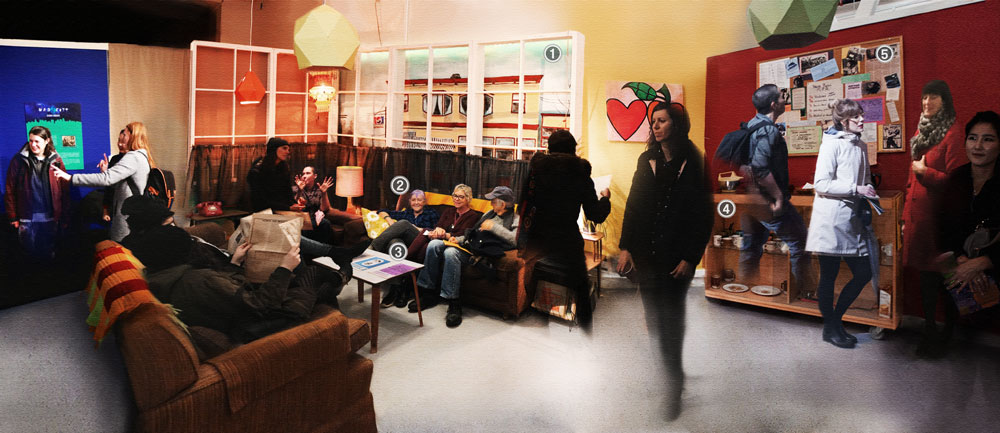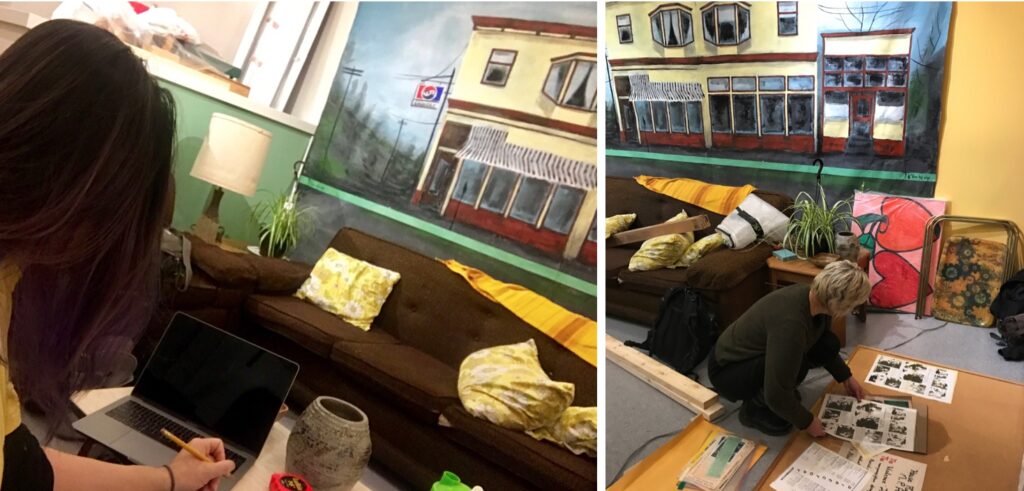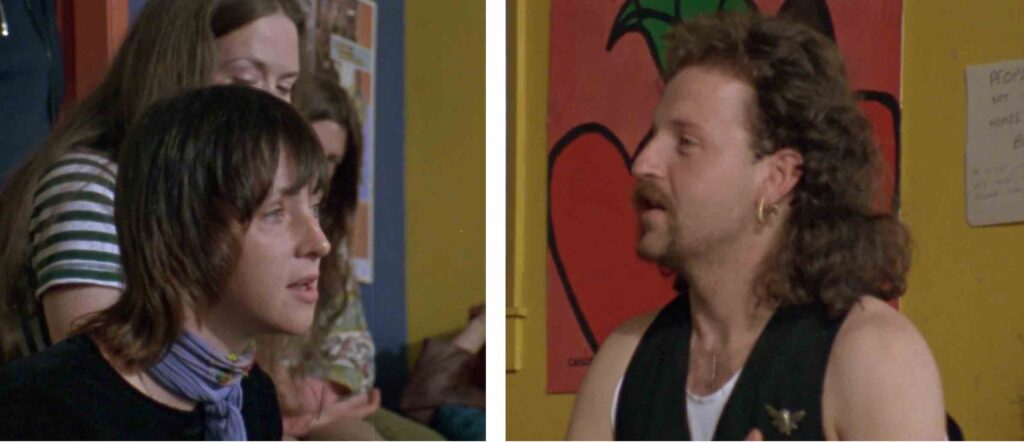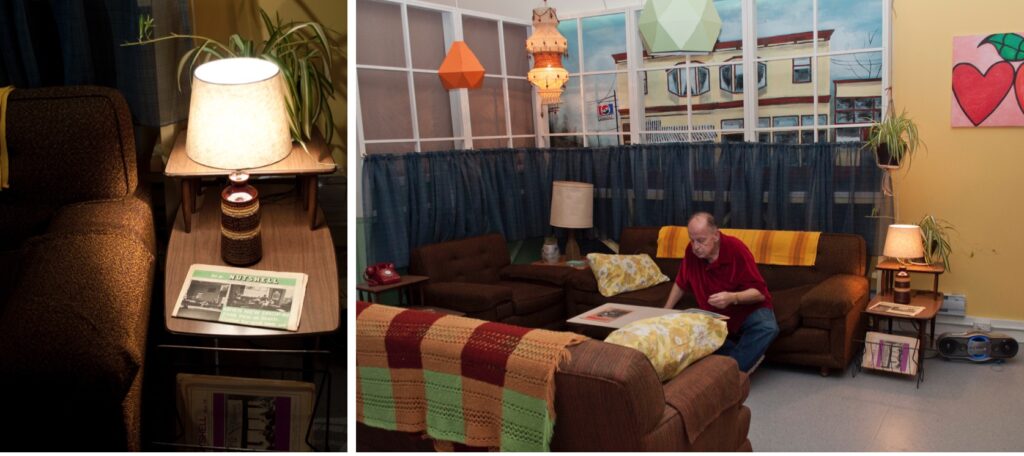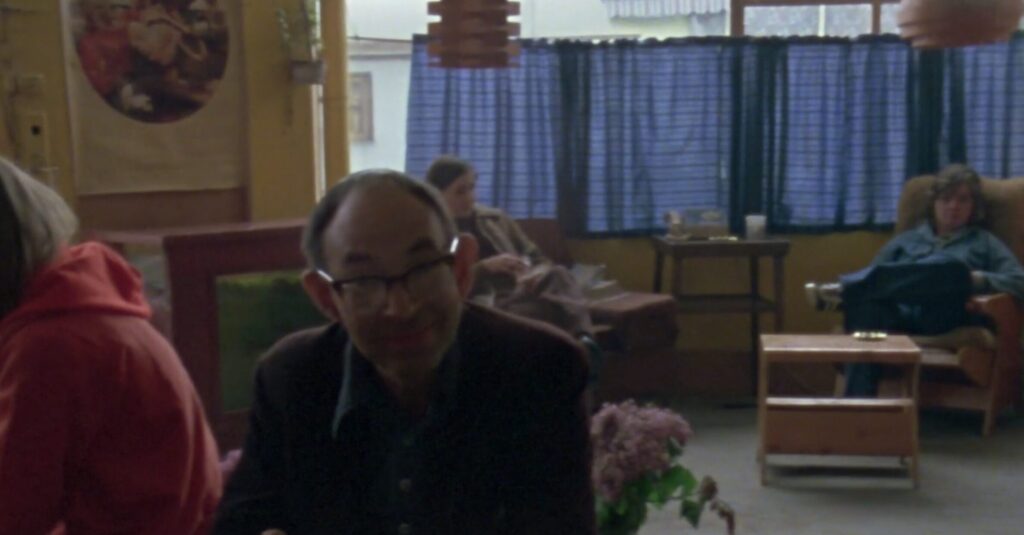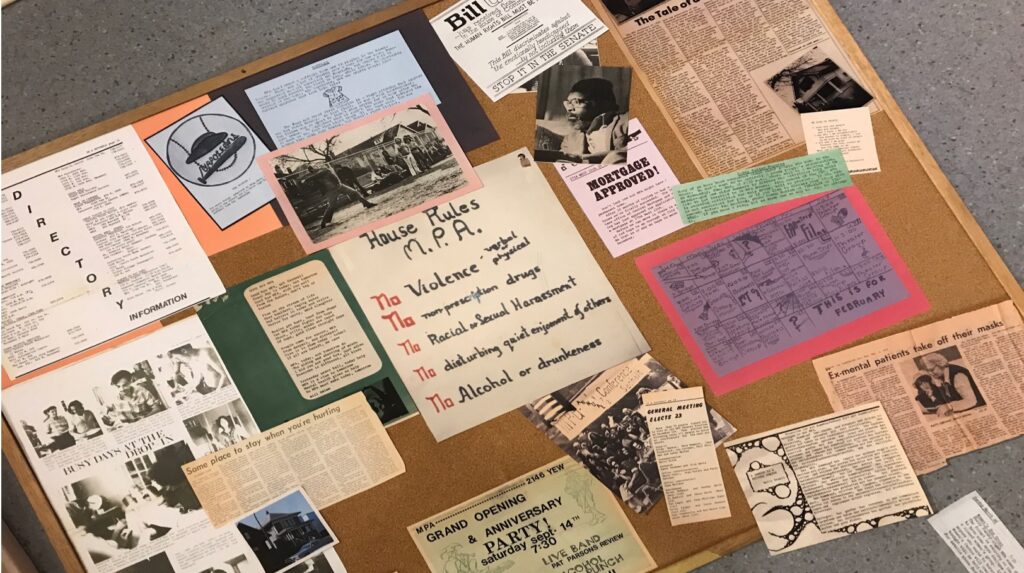Drop-In Installation
By Megan Davies
“Equality, democracy, and social justice were bywords of the period, and at MPA we tried to give life to both the words and the ideas they represented, scripting them into the everyday life and activities of the group.” MPA Founder Lanny Beckman
MPA was the first organization of its kind in the world, and its Drop-In at 6th and Yew in Vancouver’s Kitsilano neighbourhood was the group’s epicenter – a place of emotions, creativity, political action and community.
We built a re-imagined installation of the space, circa 1976. Visitors were invited to grab a cup of coffee, sit down, and read an original copy of In a Nutshell, MPA’s attention-grabbing tabloid newspaper. Everything in the installation could be accessed in a tactile fashion. Indeed, the MPA Founder who lent his Nutshells to the exhibit agreed that if an eager reader absconded with a copy, we would actually be pleased.
Recreating the MPA Drop-In as part of the exhibit seemed like a very necessary part of explaining its importance to visitors. It clearly needed to be at the heart of the exhibit: the destination for visitors after they had learned about other facets of the group’s history. The Drop-In Installation was intended to be a place to site and have a cup of coffee or tea, rest, reflect and talk with our hosts or other visitors.
As the team member responsible for recreating the Drop-In on a $1,000. budget, Megan Davies used footage from the 1977 NFB documentary about MPA as a blueprint, scouring Value Village, the Hornby Island Free Store, Craigslist, and friends’ basements for furnishings and decorative items. She convinced her accommodating brother Alan Davies to build five over size window frames in his Saltspring Island workshop, and located a scene painter to recreate the street view outside the Drop-In. Research assistant Cindy Jiang was indispensable, working with Gachet staff to negotiate our use of the gallery space and then employed her early theatre training to literally build a set to enclose the drop-in space and hold the window frames. In addition to some fast work with power tools, Cindy sewed yards of curtains and sourced a vast piece of canvas for our set painter at an unbelievable price of $20.
The reward was instant recognition from early members as they entered the space. But visual cues to the critical linkages between politics and praxis described by Beckman functioned on another, more subtle level, in this living history installation.
Founders Patty Gazzola and Arthur Giovinazzo are legendary MPA extraverts and people you would certainly have met at the Drop-In during the 1970s. Team member Mary Ellen Kelm suggested that we ask them to played a similar role in 2018. We were delighted when they agreed. The two came in regularly during the six weeks that the exhibit was open, joining SFU graduate student Candice Klein, another project research assistant.
Having Patty and Arthur on board meant that visitors could connect directly with individuals who hold the history of the early MPA. For the long time friends, it was a time to reacquaint themselves with former MPA colleagues and friends (in person and through the exhibits) and to take pride in their work of more than 40 years ago. Newly retired, Patty Gazzola relished the social aspects of hanging out at the exhibit. Reflecting on his experience, Arthur Giovinazzo realised that he had spent the 1970s working hard to secure MPA funding and keep its programs afloat. Now, fielding questions and comments from exhibit visitors new to the history of the organization helped him appreciate MPA’s – and his – place in history.
In a Nutshell was MPA’s tabloid newspaper. The 1970s issues are a visual treat. A must-read in the 1970s for local MPA members, patients, and mental health practitioners, it was also distributed across Canada and beyond. The organization began putting out a monthly mimeographed newsletter in May 1971, and by 1973 Nutshell had become an iconic publication. A dedicated group of MPA members pulled together the pieces and did layout, often staying until midnight to meet the printing deadline.
Nutshell’s busy pages, packed with notices of upcoming activities and photographs shot in the organization’s Drop-In, at group events, or in MPA houses, sent a collective message to members that they were a community. Authoritative, artistic and opinionated, In a Nutshell included intellectually substantive articles on patient issues and patient rights, and was often sharply critical of psychiatry, institutional treatment and community services. The newspaper also contained honest discussions of internal MPA politics. And always, Nutshell was invaluable venue for self-expression.
Place can be transformative. Meet MPA Founder Fred Fisher, caught on camera at the Drop-In in 1976. For a wonderful few years of his life, the Drop-In was Fred’s place of community and probably his true home.
As the MPA Founders members expressed so eloquently in their oral history interviews, the early MPA Drop-In was a place of caring – caring represented by a cigarette, a cup of coffee, a sympathetic ear, space to curl up on a couch. The rule that one simply had to walk through the door to be member of the group underscored a fundamental sense of acceptance.
The vibrancy of the early MPA Drop-In animated the lives of many people in need and also the allies who threw their energy into the work of the group and found inspiration in the former corner store at 6th and Yew. Members could attend meetings to make their concerns known and vote in their choice for coordinator staff. They might write or create art for In a Nutshell, or peruse the latest issue, looking for photos of their friends and scanning the calendar of events. They could construct furniture in the woodwork shop or learn photography skills in the darkroom.
But how to express this blend of politics, work and art? In the mid-70s folks at the MPA Drop-In didn’t bother with a bulletin board, they just stuck stuff up on the walls. We decided to play a little with the past, creating an imagined current events bulletin board circa 1975 to demonstrate the kaleidoscope of possibilities, humour, action at the MPA Drop-In.

